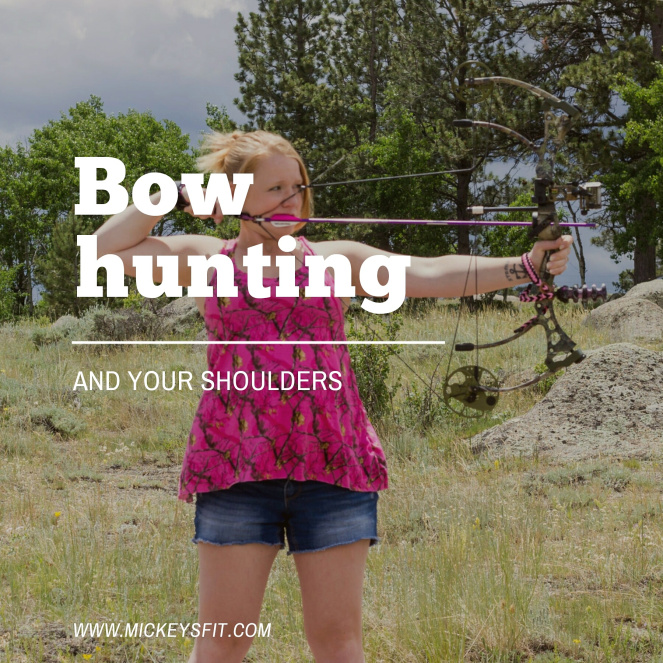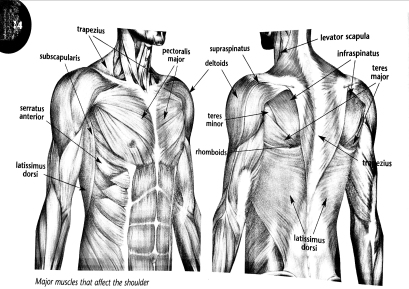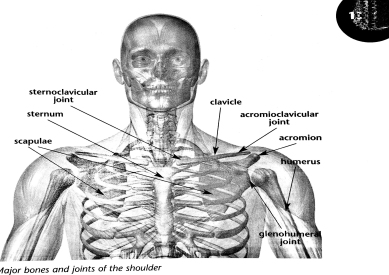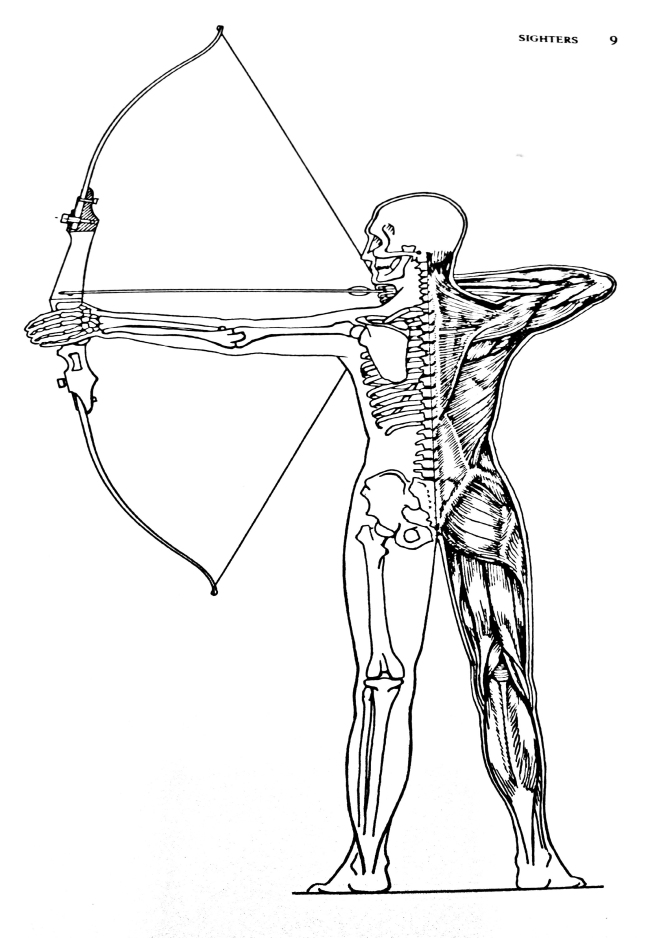
When it comes to archery, the maintenance of your shoulders and rotator cuffs is extremely important to prevent any type of injury, especially overuse. As for every physical activity, there is a proper way to recover and prevent future overuse injuries.
Shoulder impairments, caused by over use are very common injuries and are often avoidable. In fact, rotator cuff injuries (such as strains, tendinopathy, or ruptures) account for nearly 75-80% of shoulder injuries in the US.
Shoulder instability and shoulder impingement takes place in the capsuloligamentous structures (demonstrated in the image below). These shoulder impingements are typically recognized by a pinching sensation that occurs when the arm is raised and by accompanying pain while moving through the rotator cuff. This injury usually arises from overuse of overhead movement of the shoulders ie: swimming, pitching in baseball, or tennis. Shoulder instability develops when the muscles outside Glenohumeral joint don’t work effectively to stabilize the humerus.
So how do these injuries affect archers? Let us talk about shoulder anatomy, and just how it affects how well you are able to perform as an archer or bow hunter. Your rotator cuff is highly involved in every process of shooting a bow. Not only does it take great strength in the rotator cuff to pull your bow back, it also stabilizes the arm while you aim for that perfect shot.

Moffat, Marilyn. The American Physical Therapy Association Book of Body Maintenance and Repair. New York: Owl Book/Henry Holt, 1999. Print.

Moffat, Marilyn. The American Physical Therapy Association Book of Body Maintenance and Repair. New York: Owl Book/Henry Holt, 1999. Print.
Your rotator cuff is made of many different bones, muscles, joints and ligaments that all work together during this process. The four bones that make up your shoulder are the scapula, sternum, clavicle, and acromion. These four bones become the working joints of your shoulder. Acromioclavicular (AC joint), Glenohumeral (GH joint), Sternoclavicular (SC joint), and your Scapulathoracic (ST joint). These four joints — in particular the GH joint — are under a great deal of stress during archery. Most of the movement involved in your rotator cuff comes from the GH joint. This is a ball joint and is at the top of your humerus (arm bone) and top of your scapula. This joint is a ball and socket joint that moves in indefinite directions.
But it is not just the bones at work. There are approximately 56 muscles that are used when drawing your bow back; 26+ of them are in your shoulder. The muscles in your shoulder that are used to draw your bow back are your pectoralis major/minor, teres major/minor, subscapularis, Latissimus dorsi, trapezius, infraspinatus, supraspinatus, deltoid, levator scapularis, rhomboid major/minor and your serratus anterior.

Axford, R. (1995). Archery anatomy: An introduction to techniques for improved performance. London: Souvenir.
When drawing your bow back you require the use of not one, but both rotator cuffs; thus, form plays a huge role in injury prevention and muscle impairment. There are two different ways of shoulder loading during the draw back of your bow:
High Preparation
- High preparation- During high preparation drawback your strength and force is above your shoulder joints during prep and follow through of your shot.
“V” Draw (Low Draw)
- “V” Draw or low preparation- When using the “V” draw, everything is maintained below the shoulder joints during the prep, and follow through, of your shot.
Both of these methods allow for less stress upon the shoulder joints when drawing the bow.
Now that we have covered the anatomy of your shoulder and it’s action during use of your bow, let’s discuss flexibility and exercises that will help prevent over-use injury and increase strength and stability for the future.
The Warm Up:
A warm up is essential to any workout program to prevent future injuries. As a form of flexibility training, I recommend the use of self-myofascial release (SMR). Self-myofascial release is the use of tools to help muscles lengthen and increase the blood flow with in the muscle. Your body will benefit from using SMR because it will help correct any muscle imbalances you may have, release knots in your muscles (trigger points), as well as shut down those over active muscles. Foam rollers are a great type of SMR. Foam rollers use applied pressure to locate tender spots and melt tension away. To achieve release, run the roller over your sore muscle and, when you feel an increase of tenderness, hold the position and apply local pressure for 30 seconds at minimum.
SMR/Foam Roller Exercises:
- Wall Angels with tennis ball
- Seated Shoulder Drops (Lengthwise on foam roller): Reach out your shoulder blades as far as you can spread them, then draw shoulder blades back and pinch your shoulder blades directly back (imagine pinching a penny)
- Seated Open T (Lengthwise on the foam roller). Inhale opening your arms to a “T” position and Exhale when bringing them back to the front of your chest.
- Forearms-
- Lats (Latissimus Dorsi)-
- Chest release- Foam roller positioned vertically across chest extend arms out to side and keeping your abs tight slowly lift your arms off of the floor.
- Bicep Release
- Deltoid release
- Low back release
After these SMR techniques, begin a dynamic warm up.
Dynamic warm ups use your body’s force to lubricate your joints for full range of movement. Think “aerobic” instead of “stationary”:
- Shoulder rotations.
- Lift and chop
- Arm Circles
- Lunge with twist
- Windmills
- Arm W for 30 second
- Right/left for 30 seconds
The Workout!
The moment you’ve been waiting for. These are perfect exercises to increase strength and stability in your rotator cuff. You will want to choose a weight efficient enough you can complete 3 sets for 15- 20 reps :
- Push up plus 3 x 15-20
- Sword draw Cable 3 x 15-20
- Facepulls- 3 x 15-20
- Ball shoulder Combo I 3 x 15
- Renegade rows 3x 15-20
- Ropes Circles In/Out 3 x 30 seconds (Endurance)
- Ropes quick waves 3 x 25 seconds (Endurance)
Now that you have completed your workout, be sure to cool down using static stretching as well as SMR techniques mentioned above. This workout will help you be a better bow hunter as well as prevent future injuries in your shoulders. I hope you enjoy this workout!





